Pictures tell stories.
When a photo includes a person, the narrative is obvious. But the story may be less apparent when the picture is only of the natural landscape with no human element.
Knowing what the story is in a landscape can be challenging.
A story in landscape photography is a scene of the natural environment, the subjects and objects included within the frame, the relationships between these elements and their interaction.
When we think of a typical story, what comes to mind are narratives that involve people or, at least, animals that take on human characteristics.
It can be challenging to think that a photo without people can still portray a feeling or evoke an emotion.
This is why some landscape photographers miss looking for the story and either search for something pretty to shoot or get sidetracked by personal or symbolic interpretations of elements.
The story of a natural scene is critical to capturing great landscape photos.
By sharing a story through images, photographers can prompt the audience’s imagination, more effectively portray what the location was like and help transport the viewer into the landscape.
Let’s explore what a story of the landscape is and then look at the different levels of interpretation of a landscape.
What is a story in a landscape photo?
A story of the landscape is about the natural features in a scene and how elements relate and interact with each other.
While it’s not a story in a traditional sense, as there aren’t people or human interactions, a landscape photo can still feature characters, point out relationships and highlight interactions.
Establish a story of the landscape with Interesting Characters
A great story is about interesting characters. In landscape photos, natural elements found within the scene are the characters in your narrative.
There are more prominent characters who are the main subjects in an image.
There are supporting characters, which are smaller elements in the scene.
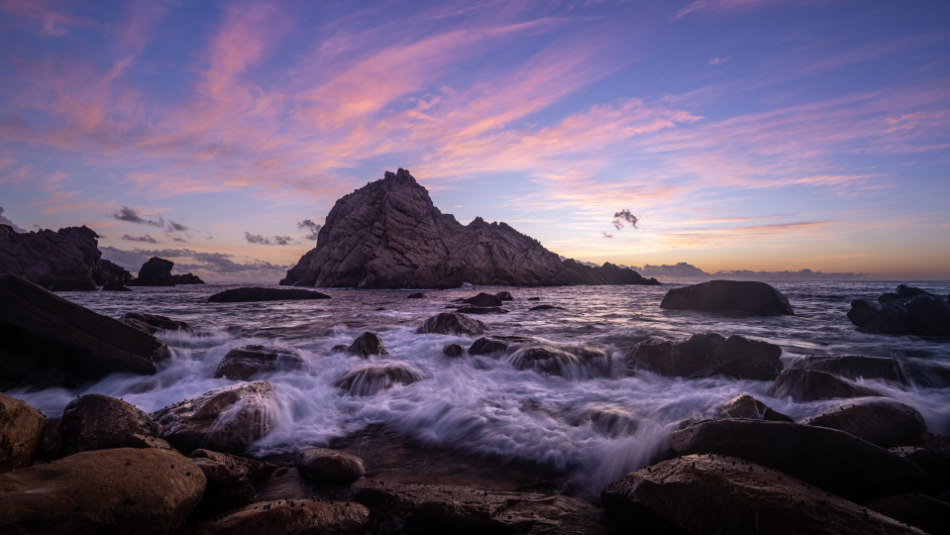
Elements that should be included in a photo are features that support the main subject, contribute to the story or are unique and have a character of their own.
Enhance the Story of the landscape with Interconnections
Stories are more engaging when they are rich and multi-dimensional.
You can find another dimension to your landscape story by highlighting the relationships between elements and their interconnectedness.
This may be a real relationship, like a group of trees clumped together that are likely to have come from the same family.
Alternatively, there could be a perceived interconnectedness between three rocks lying on the beach.
Relationships can often be portrayed between a more prominent main subject and smaller versions of that feature, like a single Autumn tree in a forest of green trees or a tall sand dune alongside a few smaller ones.
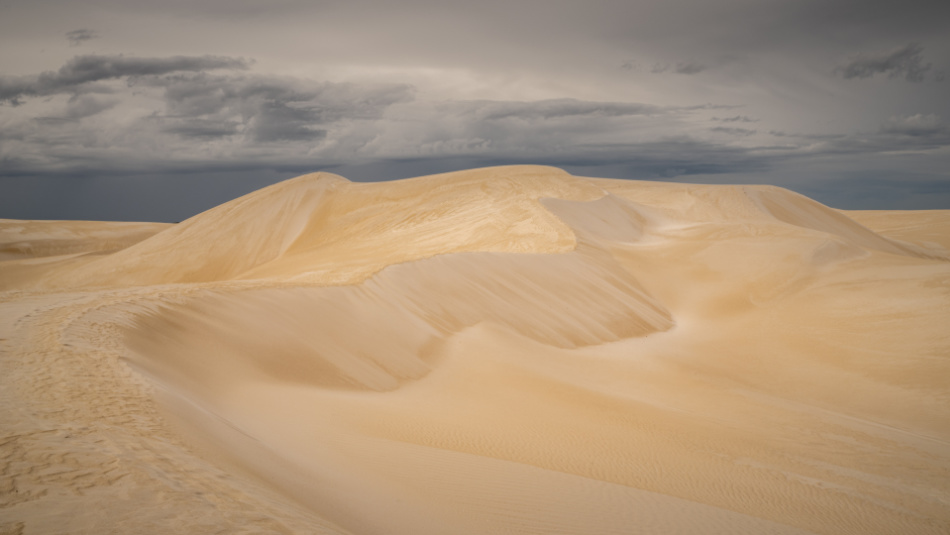
Elements of different types can be interconnected.
It’s quite natural to think that the three peaks of the sand dune above are in some way connected.
Relationships between objects can be more extensive, where elements impact each other through their interactions.
Elevate the Story of the landscape with Interactions
A story is more than the characters or the elements in the landscape.
The most interesting stories share what happens to those characters and how the elements impact each other.
There are interactions between elements in all types of landscapes.
Some interactions happen right before you, like a wave crashing over rocks or water cascading down a waterfall.
These kinds of interactions are special because they don’t always happen, or their occurrence is unique.
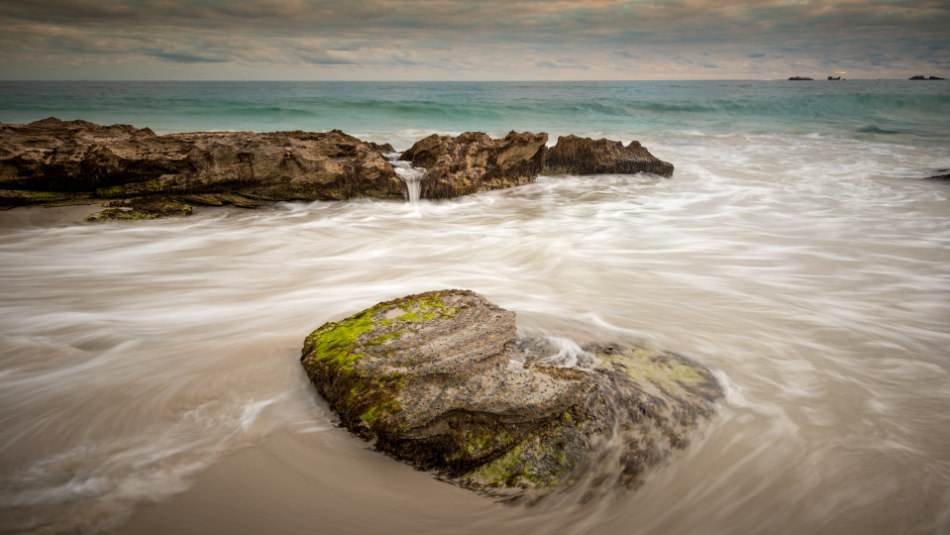
At my local beach, the tide can be at a different level. No wave is the same. How they crash into the rocks creates unique interactions.
Other impacts between elements may only happen for a moment.
Light is a special element that interacts with the entire landscape, providing wonderful fleeting moments to witness and capture.
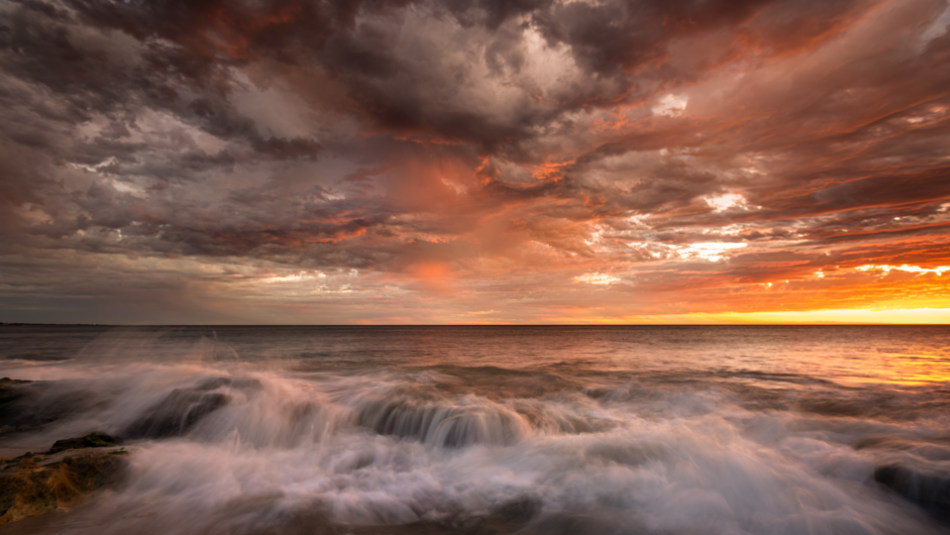
A sunset on a partially cloudy evening can provide a fantastic moment as the warm colors are reflected off the clouds.
Weather conditions like storms or snowfall can also present scenes that are difficult to replicate.
Finding Stories within a Landscape Scene
Finding stories at a location should be easier when you know what makes an interesting landscape story.
You find a story of the landscape by identifying the main features, discovering appealing elements, looking for relationships between the objects and identifying engaging interactions in the location.
While there isn’t a process to finding stories in the landscape, here are a couple of steps to follow if you need help figuring out where to start.
Identifying a Main Subject
Explore the area and identify prominent features within the landscape that could be the story’s main subject.
Work out what it is about this feature that makes it engaging, like its shape, size, color or texture.
What aspect of this main subject do you want to share through your image? This could help you decide from which angle you will shoot the feature.
Discover Other Elements
Find elements that support the story you are building.
Look for features that enhance the main subject or extend the story with a wider context.
These elements may be unusual in some way or have some character of their own.
Recognize Relationships
Look for opportunities to build part of the story around relationships between natural subjects.
Grouping multiple elements is one way to show interconnectedness, like a cluster of rocks.
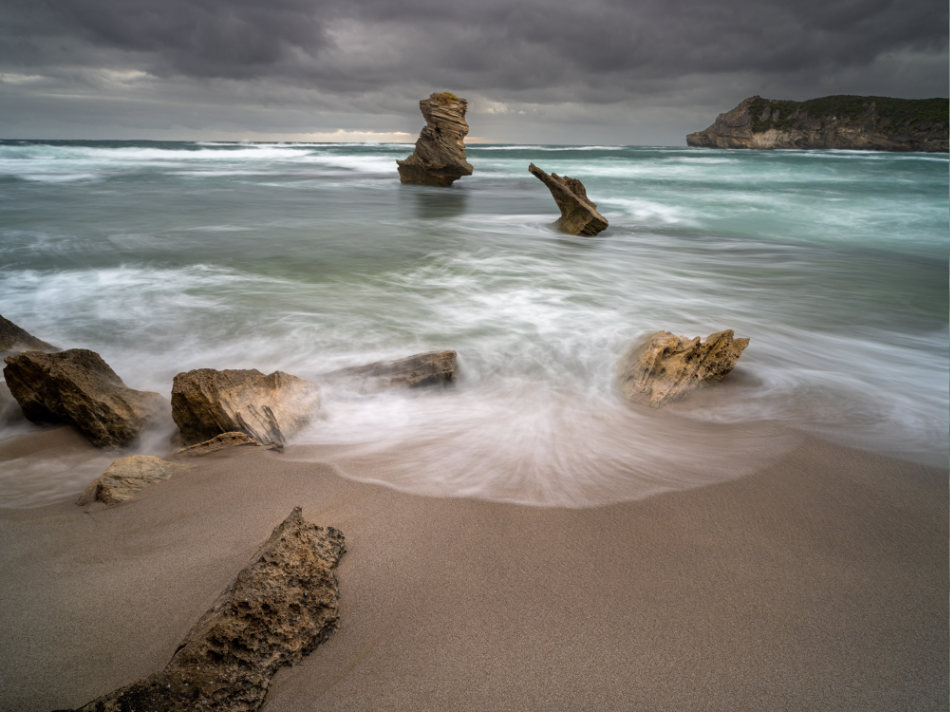
Another way is to look at the shape of an element. Like in this photo, the rock looks like it’s pointing at the sea stack.
Notice Interactions
Identify the interactions between elements that either highlight or enhance the features of the landscape, like the water rushing through the rocks in a seascape or light bouncing off an object’s surface.
With practice, you will quickly become very good at finding stories of the landscape you want to capture.
Some stories reflect the uniqueness of nature, and others share the pure beauty that can be found.
Telling a Story of the Landscape in a Photo
Not only do you need to identify great stories, but you must find effective ways to tell the story for your photo to be impactful.
To tell a story of the landscape in an image, compose the main subject and other elements in a way that lays the scene out for the viewer to discover the narrative.
There are multiple ways to do this.
Effective storytelling is created through your composition and the compositional techniques you use in your image.
Interpreting a Story in Landscape Photography
As I mentioned at the beginning of this article, it can take time to get your head around the concept of a story of the landscape.
So, I want to quickly cover the interpretation of landscape stories, as it may help simplify the idea.
A photographer can only control the story in an image up to a point. They discover the story in a location and tell it through their photo.
The audience views the picture, consumes the story, and can interpret it how they wish.
As with any form of art, a photo can be interpreted in multiple ways, and it is usually impacted by the audience’s context, prior knowledge and experiences.
There are three broad levels at which an image can be interpreted, literal, personal and symbolic.
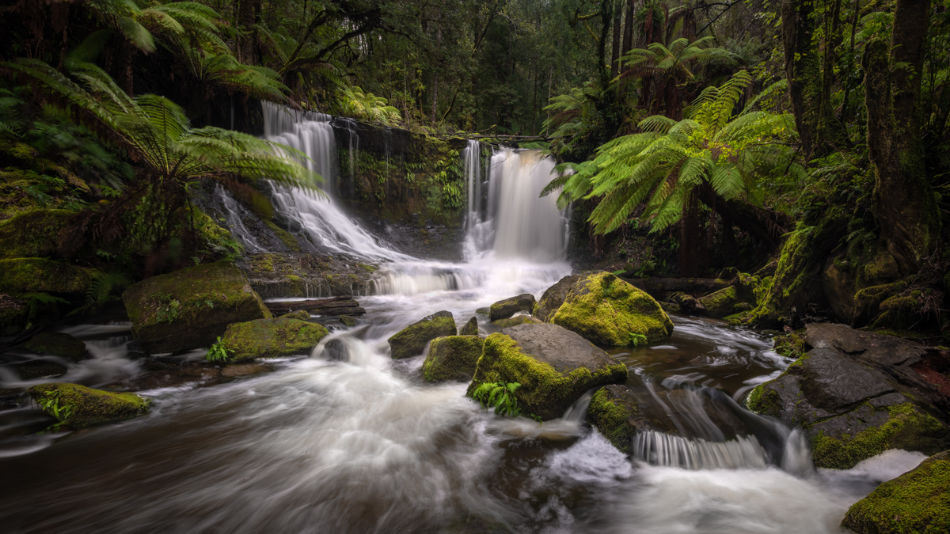
Using this image at Horseshoe Falls, I will walk through the different levels of interpretations.
Literal Interpretation of Landscape Stories
A literal interpretation is when you note what you’ve observed in a location and capture parts of that natural environment in an image.
So the movement of the water down the waterfall, the paths the water makes through the rocks, the smooth texture of the stones that the water has shaped over time, and the vibrant colors of the moss and ferns on the rocks make the story that represents the literal interpretation of this waterfall scene.
Most of what’s been covered in this article relates to a literal translation of the landscape to a story.
Although adding either mood or a sense of how you felt while on location begins to fall into the personal context
Personal Context in Finding Meaning in a Landscape Story
The audience’s and the photographer’s previous experience can strongly impact the meaning or story found in an image.
Creating a story with personal context is a trap I see some photographers fall into as they build up a narrative that’s difficult to see without the same prior experience.
For example, I hiked up a steep hill in wet conditions to reach this waterfall. I was exhausted, but my energy was rejuvenated as we walked into this tranquil area. The sound of the water was relaxing, and the round rocks resembled the shape of a soft pillow. All I wanted to do was lie down and rest.
This story is not obvious in this waterfall image. The narrative is not about the landscape but my experience within the location.
If you didn’t have the same or similar experience as me, you couldn’t interpret the image the same way and see that story.
Someone who has been to this location may have had a different experience. It may not have been as wet, and they are probably not as tired because they weren’t hauling a backpack of camera gear.
However, someone with prior knowledge of the location may see the image differently than someone who’s never visited the area.
That’s alright, so long as the story doesn’t rely on the viewer’s experience because you want the story to be obvious to anyone viewing the landscape photo.
Symbolism in a Story of the Landscape
Certain elements can hold meaning for some people, reflecting their past experiences or, at a deeper level, their culture.
Water has many meanings, from nourishment and life-giving to cleanliness and purification.
The tiny ferns clinging onto the rocks could symbolize survival, defying the odds, or resilience.
Horseshoe Falls is in the southwest of Tasmania in Nuenonne country and is significant to First Nations people who have features from this landscape woven into their own Dreamtime stories.
It’s important to recognize the cultural significance of the locations and that some landscape images contain elements that can have interpretations at a symbolic or metaphorical level.
The Impact of Interpretation on the Story You Capture
Due to personal meaning relying heavily on personal experience and symbolic interpretation reflecting individual values and cultural significance, a photo that depends on these levels of understanding will not appear as a strong image to viewers with a different background.
That’s not to say these images aren’t important, as they can hold personal significance.
Images that tell stories about the landscape’s natural beauty and capture unique moments of wonder are inspiring to view and impact viewers without the need for symbolic interpretation or personal knowledge.
QUICK RECAP
Stories can be found in the landscape that are literal interpretations of the elements seen in the scene, any perceived connections between the elements and how they interact.
Prominent features within the landscape are often the main subject of the story you capture in an image.
Elements that support the main subject or build on the story create a richer photo.
Connections between elements can add a new dimension to the story.
Movement and Interactions between elements in a landscape can enhance a story with action and dynamic energy.
Personal or symbolic meanings require prior experience or backgrounds your audience is unlikely to have.
To create a beautiful image with wide appeal, use literal interpretations in a landscape to find a story.
